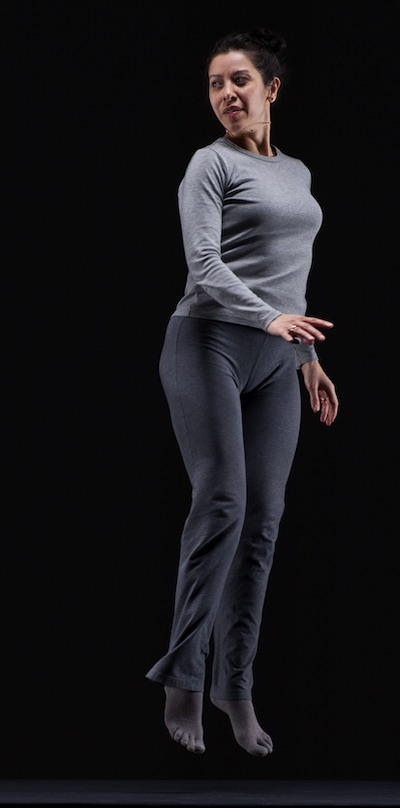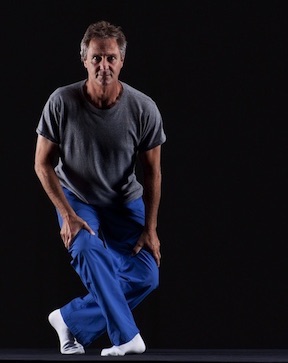Understanding sensory-motor concepts is the crucial element to moving well as we age or regain lost skills after an injury, trauma, or cerebral accident. This understanding is not cognitive in the ordinary sense. It requires sensing how we perform an action so that we can improve our motor skills with a deeper felt sense. It’s called a sensory-motor concept because if we have not developed a sufficient felt sense of our own movements, we will have a much more difficult time coordinating any and all of our movements. For example, if you don’t feel the difference between left and right, no amount of strengthening or stretching will help you.
Our fitness-crazed culture might suggest exercise—weight lifting or endurance exercises to strengthen muscles or stretching for our muscles and tendons—as the solution to our movement problems however they came to be, but without involving our brain in the way we organize our movements, all of the exercise in the world won’t restore our movement abilities in a lasting way.
The good news is that there are three primary sensory-motor concepts that we all mastered as babies. These sensory-motor concepts determine how we organize all of our actions as well as how we orient ourselves in the environment. The coordination that results from highly developed sensory-motor concepts is a matter of what occurs in your brain when you explore movement.
The first and most critical sensory-motor concept is to fully feel and move in what’s called anterior-posterior directions, i.e. front and back. Without this concept, reaching for something in front of you and bringing it back, to let’s say your mouth, could not occur. Babies first learn the movement of front to back as they start to understand and connect with their environment. For example, they see some food or a toy in front of them and bring it back to their mouth. Discovering how to put things in the mouth is critical for survival, but also, for a baby, it means to understand something through the senses and to develop the movement skills involved to bring the world to the mouth so it could be understood. Eventually as movements become more expansive, the baby brings the mouth to the world.
The second great sensory-motor concept is called vertically, i.e. moving up and down. To move all your weight away from the ground to standing up is a complex activity. It’s not only difficult, but also impossible to do without a developed sensory-motor concept of orienting ourselves vertically. We can see babies learning this concept as they explore many different ways to bring themselves to standing or sitting.
The last of the three major sensory-motor concepts is laterality. Laterality includes knowing left from right and being able to turn easily or rotate one’s body. Infants learn this concept of laterality as they master how to turn, sidestep, or reach left or right.
Understanding these sensory-motor concepts is essential for survival. With out the concept of front and back, we couldn’t feed ourselves. Mastering the concepts of verticality and laterality is crucial in being able to flee danger or to seek pleasure or satisfaction.
Beyond survival, feeling and understanding these sensory-motor concepts can result in tremendously complex movements. Imagine a high diver: You can’t jump off a high board or platform, do a triple somersault, half turn and hit the water perfectly without a felt understanding of your sensory-motor concepts. If you make a mistake and hit the water at speed, you could break your neck. You have to know when you jump off a board or platform where left and right is, where up and down is, and where front and back is.
Another example illustrating how this felt understanding of sensory-motor concepts works is getting up from a chair. A person without a developed felt sense of verticality may awkwardly try to bring their head and body higher by pushing down on the armrests with their arms. If you have a better feel for the concept of verticality, you may organize yourself to lean your torso forward to shift your weight over your legs and then push through your legs to raise your body up. This would indicate a better understanding of how your body relates to gravity and how you might need to reorganize to move with less effort and greater clarity.
As we age or after an injury or trauma, we lose these sensory-motor concepts in the reverse order that we learned them as babies: First our lateral movement becomes more difficult or limited, then our ability to get up and down becomes compromised, and finally our movement options shrink to just dealing with what is in front of us.
With loss of laterality, you may experience an uneven gait, balance disorders, and the inability to play sports you once enjoyed like tennis. You can live a good life but you might feel stiff, which no amount of stretching will improve. Relearning the motor concept of laterality can melt this stiffness.
If damage is so severe that the second sensory-motor concept of verticality is compromised, then the person would have to be in a care situation because getting up and down and walking towards objects would be difficult.
If the damage were even worse so that the first sensory-motor concept of anterior-posterior disappeared, then the person would need to be in a total care situation, since without this sensory-motor concept, they would be unable to even feed themselves.
Happily we can reverse the loss of these sensory-motor concepts by relearning how to feel them. Physical education, various forms of physical therapies, training, coaching, practicing (be it dance or sport of any kind) should be approached from a point of view that strongly involves sensory-motor skill development. This is so completely different from our current fitness craze as to make the concept of conditioning, sculpting six-pack abs, and working out to your max actually artificial and unnatural.
Teenagers and adults need to re-learn sensory-motor concepts in the same style that we all originally learned as children.
My work with people of all ages and abilities focuses on developing coordination, offering the possibility of regaining forgotten movement skills and expanding our movement repertoires and improving our skills. Both students in my programs as well as in my private practice have found themselves able to perform activities they gave up because they didn’t feel successful or found the activity hurt too much. Many of them not only enjoy dancing again, playing tennis or golf again, but they also find themselves able to perform new skills that emerge out of a superior sensory-motor understanding.
This is the first part of series of articles on sensory-motor concepts. More to follow.
-Frank Wildman, PhD


